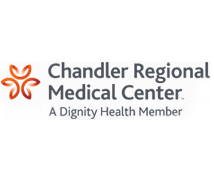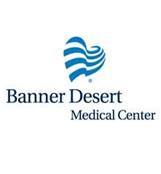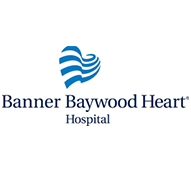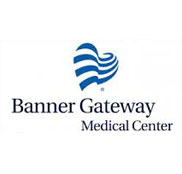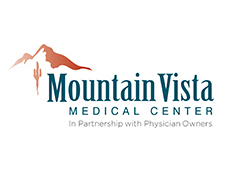Pulmonary Embolism
What is pulmonary embolism?
A blockage in one or more arteries in your lungs is called pulmonary embolism.
What are the common symptoms of pulmonary embolism?
There is a broad range of pulmonary embolism symptoms, and they vary a great deal depending upon the degree to which your lungs are involved, the size and location of the blockage, and your overall health. This last factor is especially relevant as it applies to the absence or presence of underlying lung or heart disease.
Common signs and symptoms include: weak pulse; rapid or irregular heartbeat; cough; shortness of breath; leg swelling, usually in only one leg; chest pain; wheezing; clammy or bluish-tinged skin; excessive sweating; and lightheadedness or fainting(syncope).
What caused pulmonary embolism?
When a mass of material, most often a blood clot, gets stuck in an artery in a lung, a pulmonary embolism occurs. Most often, these blood clots are formed in the deep veins of your legs, but they can also originate in other parts of your body. Not all blood clots produce a pulmonary embolism, and occasionally other materials can form blockages within the blood vessels inside your lungs. Part of a tumor, fat from within the marrow of a broken bone, and air bubbles have been known to form a pulmonary embolism.
Rarely does a single, isolated pulmonary embolism occur. In most cases, multiple blockages are involved. The lung tissue served by each blocked artery is deprived of fuel and may die. This makes it harder for your lungs to provide oxygen to the rest of your body. Pulmonary embolism frequently occurs in conjunction with deep vein thrombosis (DVT) therefore your doctor might screen your legs for clots.
Is pulmonary embolism dangerous?
Because pulmonary embolism can be lethal, immediate treatment with anti-clotting medications is key to greatly reducing the risk of death.
Who is most at risk of pulmonary embolism?
Otherwise healthy people can experience a pulmonary embolism. Although anyone can develop blockages that lead to a pulmonary embolism, certain factors can increase the odds of it happening to you. Blood clots are more likely to form in your legs during periods of inactivity, such as bed rest and during extended travel. Long journeys may necessitate your sitting in a cramped area throughout the duration of a long flight or car trip. This can slow blood flow in your veins and encourage the formation of clots in your legs.
Many older people face a higher risk of developing clots. Contributing factors include dehydration, valve malfunction, and medical problems. Family history may also increase your odds of pulmonary embolism if someone in your family has had blood clots in the past. A leading cause of forming a blood clot is surgery, especially joint replacements of the knee and hip. Certain medical conditions tend to present a higher risk of pulmonary embolism. These conditions include: cancer; pregnancy; heart disease; and previous blood clots. Poor lifestyle choices can also increase your risk of blood clots, including remaining overweight and smoking. Additionally, the clotting factors in your blood increase with supplemental estrogen in birth control pills and in hormone replacement therapy thereby increasing your risk of forming a clot.
How is a pulmonary embolism detected?
It can be difficult to diagnose a pulmonary embolism, especially in people with underlying heart or lung disease. Because of this, your doctor will probably order a series of tests to zero in on the cause of your symptoms, including: lung scan; chest X-ray; CT scan; D-dimer blood test; pulmonary angiogram; magnetic resonance imaging (MRI); and ultra-sound.
How is pulmonary embolism treated?
Taking measures to prevent blood clots in your legs also can provide increased protection against pulmonary embolism. Prompt treatment is crucial to preventing serious complications or death. Medications to treat pulmonary embolism include clot dissolvers as well as anticoagulants. In some cases, your doctor might recommend a surgical procedure such as: a vein filter; clot removal via a catheter; or emergency surgery to remove as many blood clots as possible, especially when a large clot is wedged in your main (central) pulmonary artery.
What can I do to prevent pulmonary embolism?
Hospital care often involves measures to prevent pulmonary embolism. Clot prevention strategies in the hospital may include: graduated compression stockings; anticoagulant therapy; use of pneumatic compression; and physical activity. Moving as soon as possible after surgery will not just help prevent pulmonary embolism, it will speed your overall recovery. This is one of the main reasons your nurse may push you to get up and walk as soon as one day after surgery.
While traveling, take a walk. Move around the airplane cabin once every couple of hours or so. If you’re driving, stop every couple of hours and walk around for a few minutes. Do a few deep knee bends. Exercise while you sit, flexing, extending and rotating your ankle. Don’t sit with your legs crossed for long periods of time. Wear support stockings. Drink plenty of fluids; water is the best liquid for preventing dehydration, which can contribute to the development of blood clots. And avoid alcohol and caffeine, which contribute to fluid loss.
When should I see a doctor if I am concerned I may have pulmonary embolism?
Pulmonary embolism can be life-threatening. Seek immediate medical attention if you experience unexplained shortness of breath, chest pain or a cough that produces bloody sputum.






